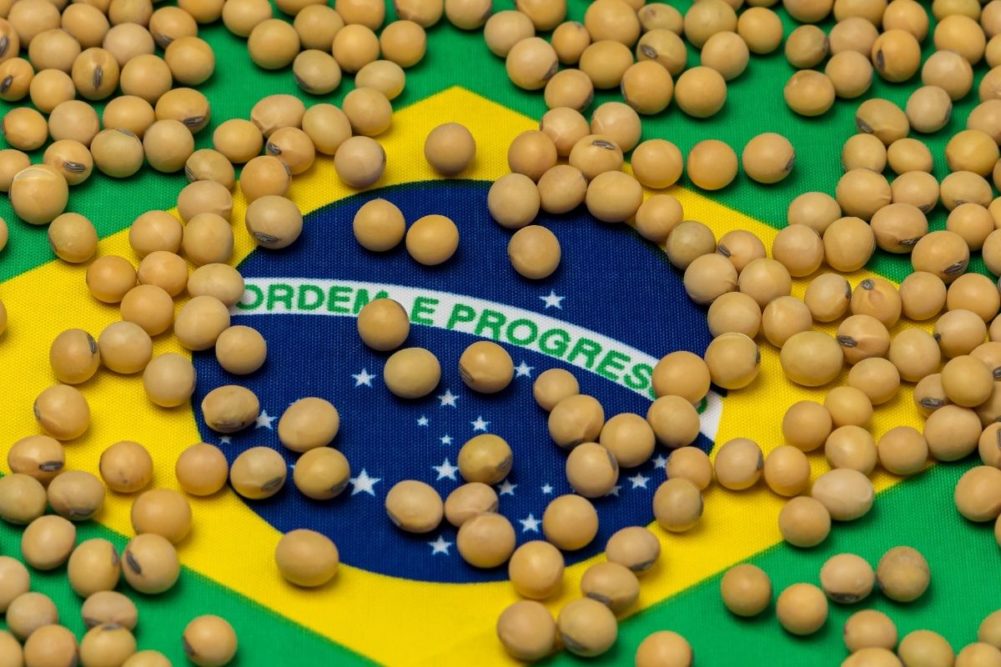Soybeans Not a Significant Factor in Amazon Deforestation

Soybean production in the Amazon Biome of Brazil has been singled out by the media as a major contributing factor for deforestation in the Brazilian Amazon, but the facts do not support that contention.
Seventeen years ago in 2008, the Brazilian Soybean Moratorium took effect. The Soybean Moratorium is a program established by members of the Brazilian Association of Vegetable Oil Industries (Abiove) and the National Association of Grain Exporters (Anec) in conjunction with local, state, and federal agencies and environmental organizations. The program was designed to prohibit the purchase or marketing of soybeans that had been produced on land that had been cleared illegally after 2008 when Brazil established its current Forestry Code.
The goal of the program is zero-deforestation in the Amazon Biome for soybean production. The program has not achieved that goal, at least not yet, but it has greatly reduced the rate of illegal land clearing for the purpose of producing soybeans.
The Brazilian National Space Research Institute (INEP) has identified 116 municipalities in the Brazilian Amazon Biome where soybeans are produced. These municipalities produced 1.6 million hectares of soybeans in 2007/08 (3.9 million acres) and that increased to 6.6 million hectares in 2021/22 (16.3 million acres). The Moratorium did not impede the expansion of soybeans, but it did direct farmers to produce soybeans on land that had been previously cleared.
Based on data from INPE, between July 22, 2008 and July 31, 2022, there were 9.12 million hectares of deforestation in the Amazon Biome (22.5 million acres). Of this total, 3.86 million hectares (9.5 million acres) occurred in these 116 municipalities, but only 192,000 hectares (474,200 acres) were devoted to soybean production. Less than 5% of the deforested area in these municipalities were devoted to soybean production. The vast majority of the deforested areas were devoted to cattle ranching.
Between 2002 and 2008, which was before the Soybean Moratorium took effect, the rate of deforestation in these 116 municipalities averaged 10,629 square kilometers annually (2.62 million acres). Between 2008 to 2022, which was after the Soybean Moratorium took effect, the rate of deforestation in the same municipalities averaged 2,997 square kilometers annually (740,000 acres).
The graph below illustrates the significant reduction in deforestation in the 116 municipalities after the Soybean Moratorium was established in 2008. The rate of deforestation increased during the last three years of the study, 2019-2020-2021, which was during the administration of President Jair Bolsonaro. President Bolsonaro reduced funding and personal for environmental agencies and he encouraged crop production in the Amazon Biome regardless if new land had to be cleared. The current President Lula has reinstated funding and personal for various environmental agencies.
In all the Brazilian Amazon, soybean cultivation accounted for less than 3% of the deforestation since the forestry Code was established in 2008. The other 97% was due to cattle ranching, subsistence farming, illegal mining and logging, and infrastructure development. The 6.6 million hectares (16.3 million acres) of soybeans planted in the Amazon Biome in 2021/22 represented 1.5% of the total Brazilian Amazon Biome of 420 million hectares (1,037 billion acres).
The graph below is titled “Rate of Deforestation in 116 Monitored Municipalities.” To the left of the vertical dotted line is prior to the Soybean Moratorium, and to the right of the dotted line is after the Soybean Moratorium too effect. The state abbreviations are MT=Mato Grosso, PA=Para, RO=Rondonia, RR=Roraima, AP=Amapa, MA=Maranhao, and TO=Tocantins. The source of the data is from Abiove and it was published by Agrolink on August 9, 2023.

Read also
Wheat in Southern Brazil Impacted by Dry Weather and Frosts
Oilseed Industry. Leaders and Strategies in the Times of a Great Change
Black Sea & Danube Region: Oilseed and Vegoil Markets Within Ongoing Transfor...
Serbia. The drought will cause extremely high losses for farmers this year
2023/24 Safrinha Corn in Brazil 91% Harvested
Write to us
Our manager will contact you soon



